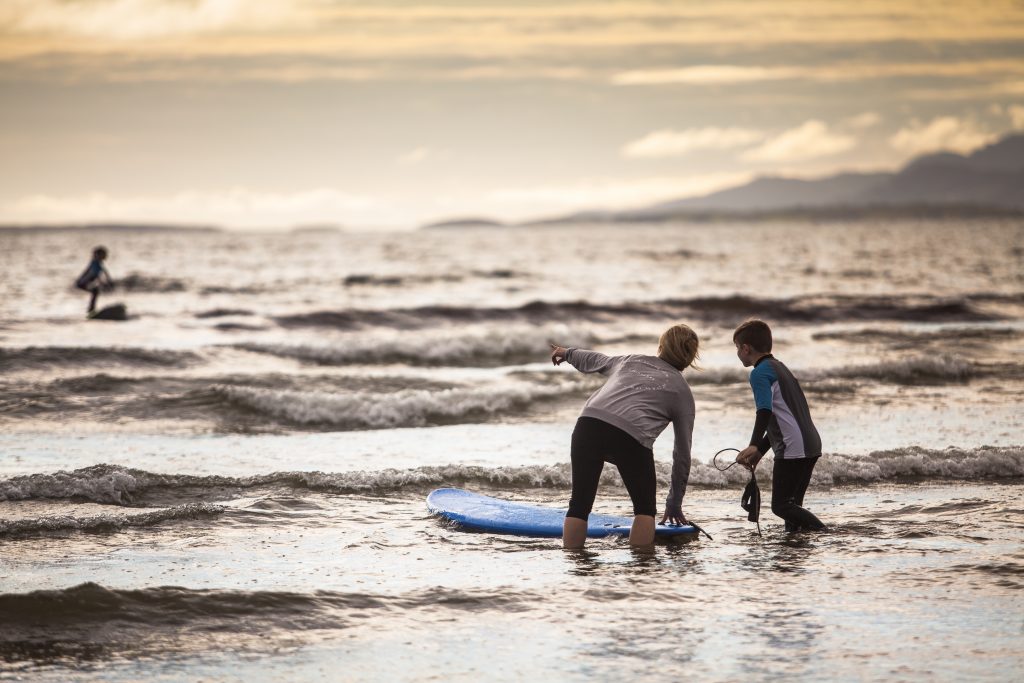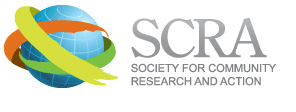Submitted by: Easkey Britton, Gesche Kindermann, and Caitriona Carlin
Highlights
Creative expression in nature can be empowering for vulnerable groups.
────
Body Mapping can be used to help create a richer picture of the potential health and wellbeing outcomes.
────
Surf therapy can be a restorative experience, particularly for children with Autism.
Medicalized interventions and the associated high rates of prescription drug use to treat anxiety and mood-related disorders are on the rise. There is a growing body of evidence for the benefits of “blue space.” Blue space refers to outdoor water environments and water-based activities that are used as an alternative or complimentary therapeutic intervention to mainstream, medicalized approaches.
Surfing involves active engagement and immersion in the sea and it can create a sense of respite from everyday and acquired anxieties and disabilities. The health benefits of Surf Therapy are linked to the fluid and dynamic nature of surfing and the sea. Learning to surf in a group context can also help enhance a sense of belonging and identity through shared experiences in the surf.
“Creative methods, such as body mapping, can be used to support the therapeutic process and help create a richer picture of the potential health and wellbeing outcomes from engaging with the sea and surfing for vulnerable youth.”
This study introduces the ways in which embodied and creative work in nature can empower young people with Autism. We explore how young surfers engage with and experience the sea and surf as health-enabling through the use of a creative and participatory evaluation method, Body Mapping. We investigate the usability of body mapping to evaluate the feelings and emotional wellbeing of young participants in a surf therapy program.
How Did A Community Psychology Perspective Inform Your Work?
Body Mapping as a participatory research methodology addresses key competencies for Community Psychology practice by embedding the research process within the natural and contextual environment. Our study emphasizes the capacity to build on and draw out the personal skills, strengths and competencies of participants. This process enhances collective empowerment among individuals working together to achieve shared goals through surfing.
Methods
There is a need for more creative approaches to measure wellbeing for groups with diverse needs and communication difficulties like Autism. The challenge is how to measure or capture health and wellbeing outcomes in a complex, fluid, and dynamic environment like Surf Therapy. Despite the moving, multi-sensory nature of ocean and coastal environments, the use of more embodied practices and participatory evaluation methods of therapeutic blue space interventions have been limited. Body Mapping is a creative, participatory, in-situ method that engages the senses and draws on similar methods used in art and dance therapy as well as mindfulness-based practice. Body Mapping encourages active participation with the aid of objects, symbols, colors and sensations. It also incorporates reflection and storytelling that provides the means to creatively explore the relationships between personal, social and natural worlds. Body Mapping is considered particularly effective as a self-evaluation method well-being when working with children and adolescents.
Results
Creative and participatory approaches like Body Mapping have potential to support therapeutic processes and other practices, in particular those related to the imagination and emotional body, in a playful and engaging way.
- Participants accounts of their wellbeing before and after surfing, expressed in various ways through Body Mapping exercises, revealed shifts in their sense of identity, self-awareness and connection to nature, improving confidence, interpersonal and communication skills for those with low self-esteem.
- Sharing in a group enhanced communication skills and provided participants with the opportunity for interpersonal connections across ages or outside of their typical everyday peer group.
- The use of Body Mapping enables complex thoughts and feelings to be elicited and expressed creatively, contributing to a deeper understanding of place-based therapeutic interventions as well as the visual communication of embodied meanings as qualitative ‘evidence.’
- In addition to its use as an evaluation tool, Body Mapping has potential to be used as an exercise that can help facilitate greater body-mind-nature connection. Body Mapping can also be used as a therapeutic intervention on its own and to compliment other methods.
What Does This Mean For?
Research: Findings support the benefits of Surf Therapy, associated with an increase in self-esteem and confidence. Feelings of stress and anxiety before surfing shift into greater feelings of happiness, joy and love. The use of participatory, creative in-situ methods like Body Mapping can help capture these before / after experiences and provide a greater relational understanding of our connection to ourselves, our bodies and nature.
Practice: Body Mapping can be integrated within the therapeutic process or existing practice to support key enabling factors by creating a safe space where each individual has the freedom to creatively express themselves.
Social Action: Using creative and embodied practices and methods like Body Mapping creates a space for different forms of expression, supporting wider forms of engagement and communication that do not rely solely on traditional (written/verbal) methods that may exclude and alienate.
Original Citation: Britton, E., Kindermann, G., & Carlin, C. (2020). Surfing and the Senses: Using Body Mapping to Understand the Embodied and Therapeutic Experiences of Young Surfers with Autism. Global Journal of Community Psychology Practice, 11(2), 1 – 17.



